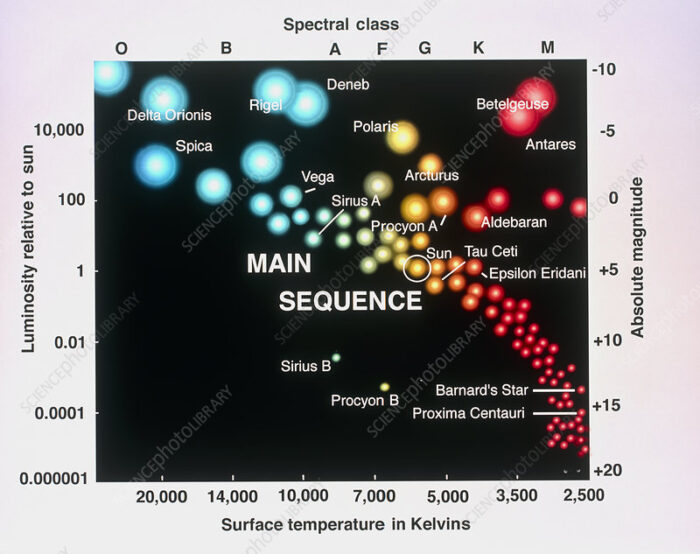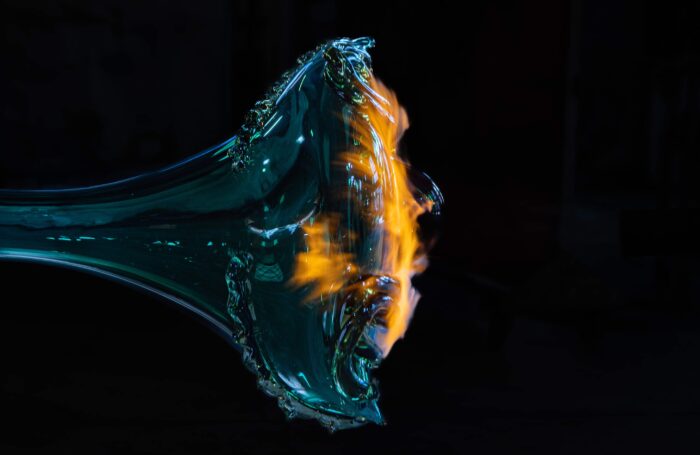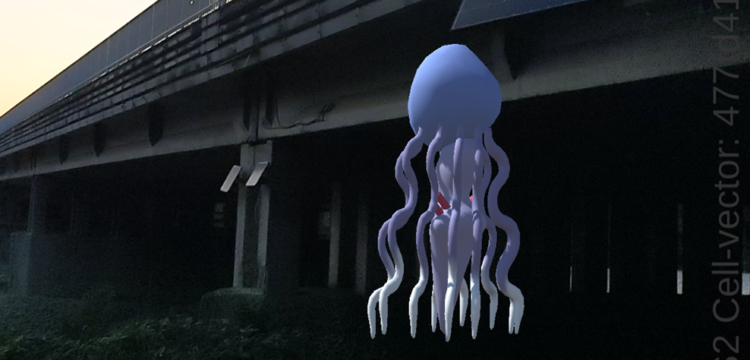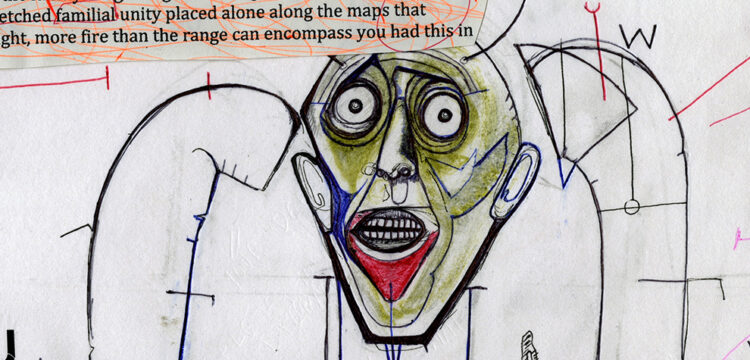Cristals in the Gut
Francesco Cavaliere in conversation with Ramona Ponzini
The works of Francesco Cavaliere are capable of enlivening his listeners’ inner states through a polymorphic activity that combines writing, sound, voice, drawing, sculpture, which together stimulate the imagination, undertaking long journeys crossed by ephemeral presences.
His new project Abyssal Creatures materializes a fantasy narrative about a group of creatures, a new saga by the artist inspired by the images of the marine flora of the abyss, hybridized with archetypal figures of the human unconscious. These creatures, coagulated on glass in the form of sound sculptures are beings that inhale sound and exhale resonances. The new artworks by Francesco Cavaliere are an ensemble of concave Murano blown glass sculptures, which recall animals and plants from the depths of the sea, non-bipedal, transparent creatures assembled like communicating vessels that form a sounding body. The music that flows inside them is like an abstract vascular form, drawing inspiration from the Xylem and the lymphatic systems that some plants have.
Abyssal Creatures is curated and produced by Xing with the support of the Italian Council (2023) and has been developed during 2023-24 along a productive and creative process with several occasions of activation. After Porto (festival The Museum as Performance at the Serralves Museu de Arte Contemporanea), and Bologna (italian première curated by Xing at Aula Magna of the Fine Arts Academy) it was presented in New York in April curated by ISSUE Project Room at UrbanGlass in collaboration with Pratt Institute, and on 27 June at the GAM – Gallery of Modern Art in Turin in the context of SilenzioSuono – SoundSilence, with a new dynastic filiation, Sàbanas II, a sound sculpture recently acquired by the museum. In autumn, an artist book will be published with ViaIndustriae Publishing and an album for Xong collection – artist records will be released. The work will become part of the collections of the Museo d’Arte della Città di Ravenna.
Powers of Ten
Ramona Ponzini: Imagine you are lying comfortably on a picnic blanket, enjoying the outdoors, snacks and drinks, reading a book. From your body a camera that reaches out to distant galaxies recedes at powers of ten, into cosmic darkness. And then, in free fall, the camera re-crosses space, the atmosphere, toward you, and continues to fall within you, again in powers of ten, but in negative, through your epidermis, veins, blood, chromosomes, down to the smallest constituent particle.
Imagine that in 1977 Mr. and Mrs. Eames—the designers of the Lounge Chair, the Eames Elephant, the DAW and DAR, the Hang it all and other iconic products—made a short film to depict the relative scale of the Universe according to a factor ten logarithmic order, expanding from the Earth to the entire universe, and then shrinking inward to observe a single atom and its quarks.
A leap up and then a leap“in”. Your works restore this feeling. Listening to you and seeing your performances is like taking a leap into the cosmos and at the same time into the visceralities of the human being. It is something I find back also and especially in the Abyssal Creatures operation. How did the project come about?
Francesco Cavaliere: The project was born out of a desire to continue a study of mine on convex/concave forms. Forms that open and close within themselves. What you are saying and asking me to imagine, while thinking about the Eames’ film (the descent/swooping ascent of an inside-out detail) is definitely something that has always driven me crazy and scared me. I’m talking about those early cartoons on the human body, the subcutaneous universe, and so on. As a child I wondered what the inside out was, what the outside was, like everybody, I guess, What’s going on? What does it mean to swallow something? I used to think about it so much that I would choke on what I was chewing. In the end, I think it has something to do with what I do.

Black Holes
RP: You are an intelligent, blind life form walking on an elastic surface on which someone or something has thrown a singularity, like a stone, that has bent and pulled it downward. You suspect, therefore, the universe is not flat, so you begin to walk around it circularly, perceiving its circumference, and then walk around its diameter. And you realize that it is infinitely longer than it should be. You then understand that you are moving on a curved surface. If you fall toward the singularity, go past a certain horizon, and want to transmit signals, beyond that same horizon, those signals get trapped into it. You have to hover above that threshold in order to return them to others.
In 2014, American theoretical physicist Kip Thorne, who will later receive the Nobel Prize in Physics along with Rainer Weiss and Barry Barish, wrote a popular essay explaining the theoretical apparatus behind Christopher Nolan’s film Interstellar (2014), and Nolan’s attempt—with Thorne’s own advice—to give visual representation of a black hole, Gargantua. An entire chapter of the book The science of Interstellar is devoted to black holes.
Black holes are made of curved time and curved space. There is nothing else inside them. What is inside your sculptures?

FC: I honestly didn’t know this detail from Nolan’s film, I definitely need to look it up. Black holes, event horizons and all the literature connected with those things are my favorite instant chamomile ~ Rabelais’ giant Gargantua had an emerald belt! A lassoed black hole comes to mind! Anyway ~ now I’ll answer your question ~ Inside my sculptures there is a kind of spirit, a concentric sound system that goes out, comes in, and out again; only when I decide to turn it off does it end. This is diffused by a single speaker, which is located at the base of the plinth of each one. It is a kind of transparent venous system in diffusion. These musics are trapped, and to get out, they must traverse three planes upward. When assembled, the sculptures are in fact composed of three juxtaposed parts, jar within jar within jar, three vertically communicating vessels. Some have major outlets, SÀBANAS I, for example, the teal sculpture, has openings in its head-eyes? It slits! While ALIQUOMANÀS, the orange one, the thorny sculpture, has very few outlets, it is all closed, and the sound remains trapped, apart from tiny holes in the horns and in the rods. ENQUOMANÀSC, the transparent yellow one, is the most open of all, it is like a flower; in fact they are all very different. Technically speaking however, for sound synthesis I mean, I decided to use Praat, a medical speech synthesis program for speech therapists. A little program created in the 1990s (and still evolving) by Paul Boersma and David Weenink. I have been using it for some time, from Xylomania (2018) onward. In this case, however, I used it differently. I needed to create voices, breaths that were not properly recognizable. Anyway Praat always brings you back to the phoneme, to a vocal emission sound (larynx, trachea and everything that forms our apparatus). I’ll give you an example; if you upload a percussive file, and you start manipulating it with filters, for example, the Klatt preset filter (Dennis Klatt is the one who synthesized Stephen Hawking’s voice): this will turn “a marimba” into a kind of primordial vocal emission. The marimba will no longer be recognizable; or rather aspects of its sound will sound closer to voice than to percussion; even if something of the original sound is then retained. After juggling these numerical synths, I began to collapse the program—inserting random values, values that our phonatory apparatus actually cannot pronounce, and that’s how some of the noises, and breaths, and abysmal sculptures were born.

Logos and paideia
RP: Aphasia. Verbal apraxia. Buccolingual-facial apraxia. Dysphonia. Dysarthria. Peripheral organic dyslalia. Logophobia. Broca’s area. Wernicke’s area. Arcuate file.
I read that the professional profile of the speech therapist in Italy was defined at the ministerial level in the 1990s.
Let’s talk about words, then. What is your relationship with words? What does “word education” mean to you?
FC: There are speech therapy books accompanied by a mirror and a set of words to pronounce. So that when you pronounce them you can observe the facial mimic movement and try to correct it. When I saw these books, I fell in love with them, but at the same time I thought about how much the word, language, in fact, has no real finite point, you can constantly change it, educate it, try to measure it, but it has no end. For centuries, we have been packing it into books, flaring it out with poetry. The mouth makes me laugh, its grimacing movement, how it opens, stretches, etc. Words, sounds then are traveling signs imbued with infinite variations. Throwable signifiers.
Even when we are silent in solitude, you can talk to yourself; the voice comes in, goes out, warms you up, advises you, and then goes away. If you answer it, good, otherwise it stays inside you and says nothing more.

True Colors
RP: Teal – Orange – Yellow. Cavaliere – Newton. Francesco – Isaac. Isaac – Cavaliere – Francesco – Newton. Color, light and glass. In 1672 Newton sent to the Royal Society’s journal Philosophical Transactions a paper on the experiments he was conducting on the refraction of light through glass prisms, concluding that the different refracted rays of light could not be changed by further refraction—nor by any other means except by mixing with other rays—and identifying the seven primary colors. If you swirl Newton’s Disk, what you will see, the mixture of all the primary colors, is white.
How did you go about choosing the colors of the sculptures?
FC: This introduction of yours on Newton brings to mind a passage from Stephen Hawking’s The Theory of Everything, Origin and Fate of the Universe.
“Stars are so far away that they appear to us to be just pinpoints of light. We cannot determine their size or shape. So how can we tell different types of stars apart? For the vast majority of stars, there is only one correct characteristic feature that we can observe—the color of their light. Newton discovered that if light from the sun passes through a prism, it breaks up into its component colors—its spectrum—like in a rainbow. By focusing a telescope on an individual star or galaxy, one can similarly observe the spectrum of the light from that star or galaxy. Different stars have different spectra, but the relative brightness of the different colors is always exactly what one would expect to find in the light emitted by an object that is glowing red hot. This means that we can tell a star’s temperature from the spectrum of its light. Moreover, we find that certain very specific colors are missing from stars’ spectra, and these missing colors may vary from star to star. We know that each chemical element absorbs the characteristic set of very specific colors. Thus, by matching each of those which are missing from a star’s spectrum, we can determine exactly which elements are present in the star’s atmosphere.
In the 1920s, when astronomers began to look at the spectra of stars in other galaxies, they found something most peculiar: There were the same characteristic sets of missing colors as for stars in our own galaxy, but they were all shifted by the same relative amount toward the red end of the spectrum. The only reasonable explanation of this was that the galaxies were moving away from us, and the frequency of the light waves from them was being reduced, or red-shifted, by the Doppler effect. Listen to a car passing on the road. As the car is approaching, its engine sounds at a higher pitch, corresponding to a higher frequency of sound waves; and when it passes and goes away, it sounds at a lower pitch. The behavior of light or radial waves is similar. Indeed, the police made use of the Doppler effect to measure the speed of cars by measuring the frequency of pulses of radio waves reflected off them.”

I quoted Hawking’s passage here because he, like few others, can explain the phenomenon of the expansion of the universe through analysis of the light spectrum of stars. But what does this have to do with my sculptures? When I had to decide on colors, I began to go around to many kilns, looking at everything, web, around, new things, old things, shop windows, objects in storage. As you know quite well, everything was done in Murano, and I liked almost everything, even the most obvious… However, I trivially decided on classic Venetian colors, blue or teal, yellow, orange and red—always transparent. No effect, just color and transparency. With the first models I began to realize that I had unknowingly chosen those colors that, as Hawking says, are not retained by “absorption lines” and that are used to describe stars. Simplifying as much as possible; very hot stars are blue O, cooler stars, white and then yellow F and G, even cooler stars, orange K, and finally stars that are far away and still receding red M. When I realized this, I repeat unconsciously, all my thinking about the abyssal, boundless sinking both above and below closed in a flash.





